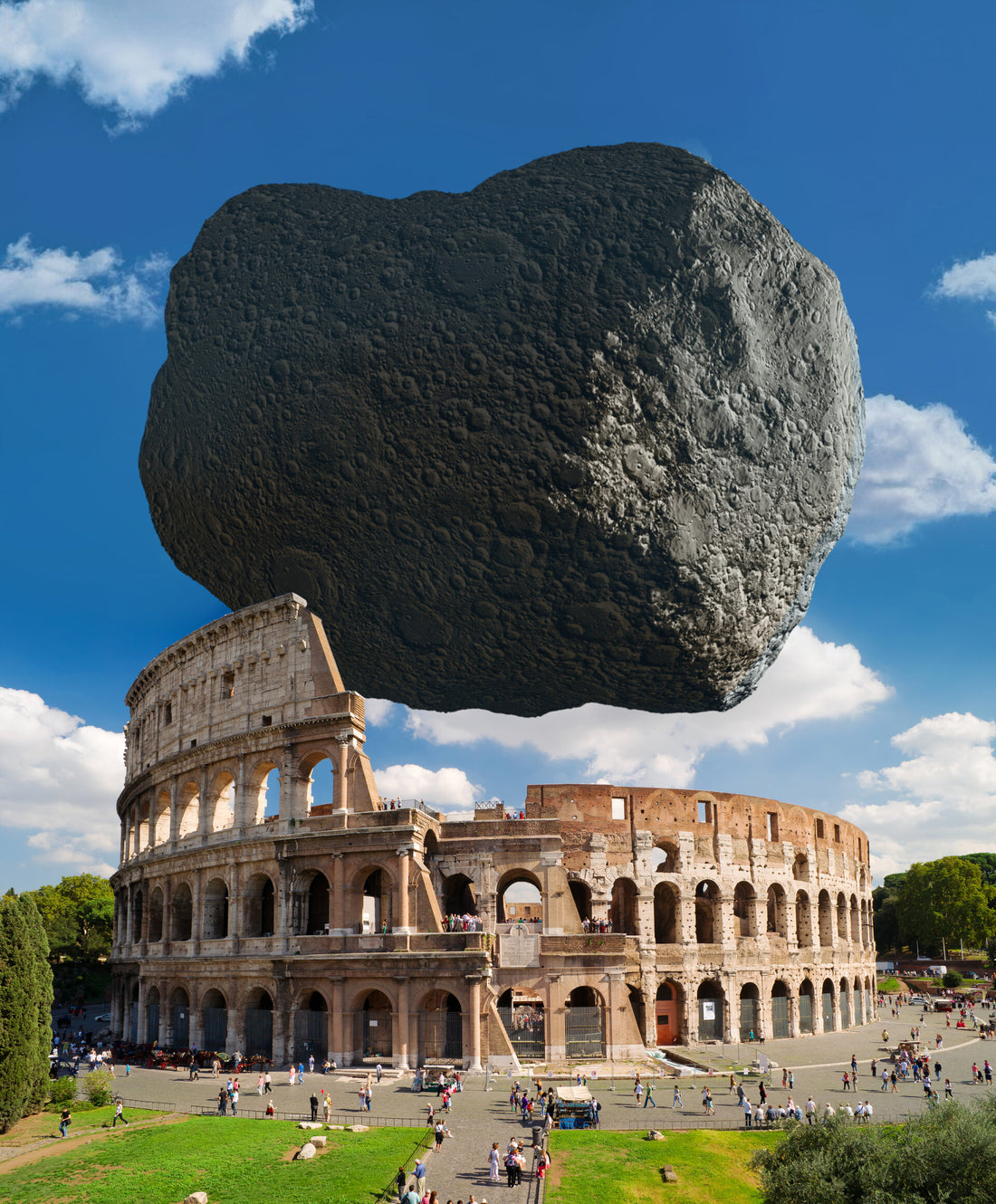
This Is What Would Happen If NASA's DART Asteroid Hit Earth
Share
Although the DART spacecraft didn't nudge its target asteroid toward Earth, there may be other space rocks of a similar size approaching us - and that's why DART's mission is so crucial.
In a successful demonstration of the planetary defence strategy of "kinetic impact," DART smashed into the 160-metre-wide asteroid moonlet Dimorphos as planned. Several internet users speculated that NASA may have accidentally sent an otherwise harmless space rock toward Earth after the dramatic impact.

It is obvious that such speculation is unfounded. DART's death dive cannot meaningfully affect Dimorphos and Didymos' orbits around the sun, according to mission team members. DART will only affect the orbit of the moonlet Dimorphos around the 780m Didymos. Scientists believe Didymos' binary nature serves as a security brake against unwanted orbital changes.
"We move the little guy, but the big guy is like an anchor. It's holding it back," said Andy Cheng, the chief scientist for planetary defence at the Johns Hopkins University Applied Physics Laboratory (APL) in Laurel, Maryland, which manages the DART mission for NASA. "The orbit of the whole system around the sun changes by such a tiny amount that it's hard to measure."
No threat at all?
Though technically classified as potentially hazardous, Didymos is of little concern to experts in planetary defence.
"The closest distance [of the Didymos binary asteroid system] to Earth's orbit is still on the scale of several million miles. It is not even a threat at all," said Tom Statler, a NASA planetary scientist. "There's nothing that's going to happen to it to make it a threat in any of our lifetimes."
Asteroid orbits are modelled for centuries into the future by astronomers. These orbits shift, however, due to the gravitational pull of the giant planets of the solar system, such as Jupiter and Saturn. Asteroid shifts are very slow, but one day, an asteroid that isn't a threat today may become one.
Our ignorance of asteroids poses a greater risk. According to NASA and its partners, only about 40% of asteroids wider than 140 meters - about the size of Dimorphos - have been discovered so far. Although none of the known asteroids poses a threat to Earth in the foreseeable future, space agencies around the world want to make sure they know how to avert such a space rock if it were to sneak upon us. Hence the DART mission.
How much damage would an asteroid the size of Dimorphos cause if it were to hit Earth?
There is no way a Dimorphos-sized space rock could send us the way of the non-avian dinosaurs, which went extinct as a result of an asteroid impact about 10 kilometers across. Even so, if a Dimorphos-sized rock crashed down in the vicinity, it would cause considerable destruction.
"If [an asteroid as big as Dimorphos] were to fall on the city of London, windows would break over the whole southeast of England, and the damage in [the Greater London] area would be very extreme," said Gareth Collins, a professor of planetary science at Imperial College London. "There would be no survivors in the center of London because of the impact itself, and also because of the severity of the air blast."
An asteroid of this size would create a crater over 1.6 km wide and over 1,200 feet deep, knocking down buildings tens of miles away from ground zero. According to Collins, the rock would explode close to the ground before its remnants hit the planet's surface and cause extreme heating, melting the ground and sparking fires in the area closest to the explosion.
"If the asteroid fell into the ocean, it would produce very large tsunami waves," said Collins, who together with his colleagues created an online tool that enables researchers (and members of the public) to explore impacts of asteroids of various sizes. "But if it happened deep in the ocean, the waves would dissipate to quite low-amplitude waves before reaching the coast," he added.
The impact of such a rock on the ocean would be devastating if it fell close to shore. As a result, planet defenders want to have technology ready in case an asteroid hits a major city, even though the likelihood is low.
QUESTION: Do you think we’ll see an asteroid diverting course thanks to DART in our lifetime?
You’ve come this far…
Why not venture a little further into A.S.S. - our exclusive Australian Space Society.
And keep thrusting Australia into the deep unknown…
#Space_Aus




